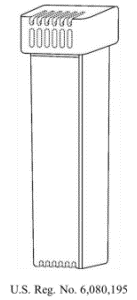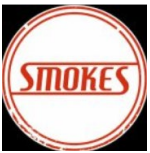In a precedential opinion addressing the most fundamental requirement for trademark protection, the Trademark Trial & Appeal Board (Board) affirmed the US Patent & Trademark Office’s (PTO) refusal to register a “#” based mark on the ground that it fails to function as a mark. In re Pound Law, LLC, Ser. No. 87724338 (TTAB Nov. 9, 2022) (Adlin, Lynch, Larkin, ATJ)
Pound Law, claiming acquired distinctiveness under Section 2(f) of the Lanham Act, sought to register #LAW as a mark for providing legal services and legal referral services to consumers seeking a lawyer where legal representation or referral is initiated by phone. During prosecution, the Examining Attorney refused registration on the ground that #LAW failed to function as a service mark, reasoning that a consumer would only understand that dialing #LAW would put them in contact with some legal service provider, but not specifically Pound Law. Pound Law appealed.
Pound Law argued that the Examining Attorney improperly applied a per se rule against mnemonic or vanity telephone number marks as being incapable of functioning as a mark identifying the source of goods or services. In response, the Examining Attorney asserted that the PTO refused registration only after engaging in a specimen-based determination tailored to the #LAW mark. The Examining Attorney argued that, based on the manner of using the mark with a telephone, a consumer would regard #LAW only as a means of contacting Pound Law and concluded that #LAW does not indicate the source of legal services to be rendered, only a means by which legal services might be obtained.
To assess whether #LAW conveys an informational message or functions as a source identifier, the Board considered whether the nature of #LAW affects consumer perception of the asserted mark. The Board cited examples #LAW or #law being used throughout the legal industry, including as a hashtag in social media content. The Board reasoned that, in the context of social media, a hashtag functions as a searchable keyword, not as a source identifier. Pound Law argued that it ran radio advertisements vocalizing #LAW as “pound law” to explain to consumers that the asserted mark is not a hashtag.
The Board did not find Pound Law’s evidence persuasive, explaining that Pound Law’s radio advertising was insufficient to instill Pound Law as the source of the legal services in a consumer’s mind since “there is no correct pronunciation of a trademark, and consumers may pronounce a mark differently than intended by the brand owner.” The Board also pointed to evidence of Pound Law’s “extensive visual-only advertising,” which does not distinguish the use of an octothorpe as specifically a pound sign on a telephone keypad as opposed to a hashtag used on social media platforms. The Board concluded that many consumers would understand and pronounce #LAW as a hashtag (i.e., vocalized as “hashtag law”) “given the prevalence of social media and hashtags.” On this point, the Board highlighted “quite persuasive” evidence of numerous examples from the record showing third parties—e.g., law firms, legal [...]
Continue Reading
read more

 Subscribe
Subscribe




